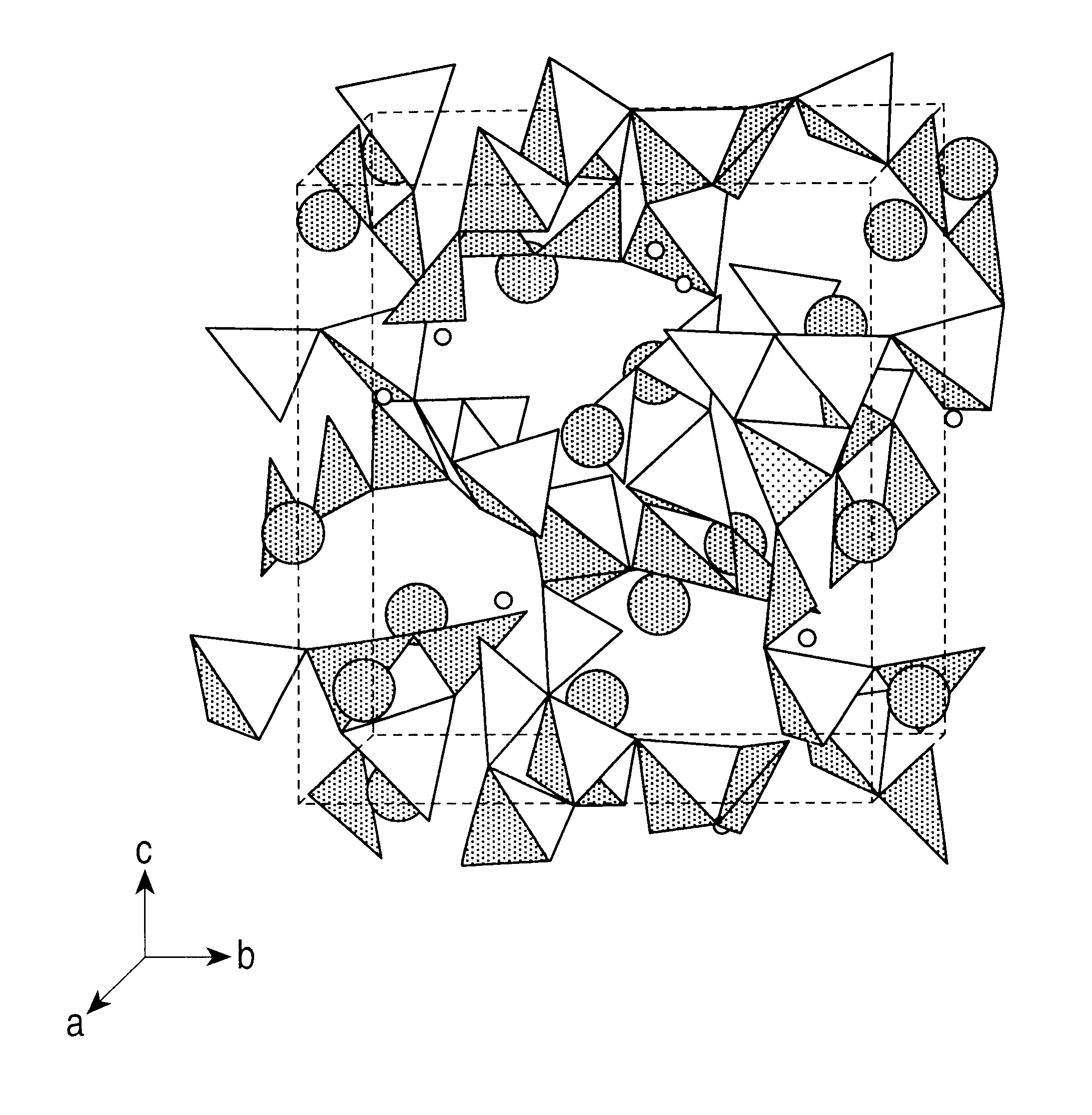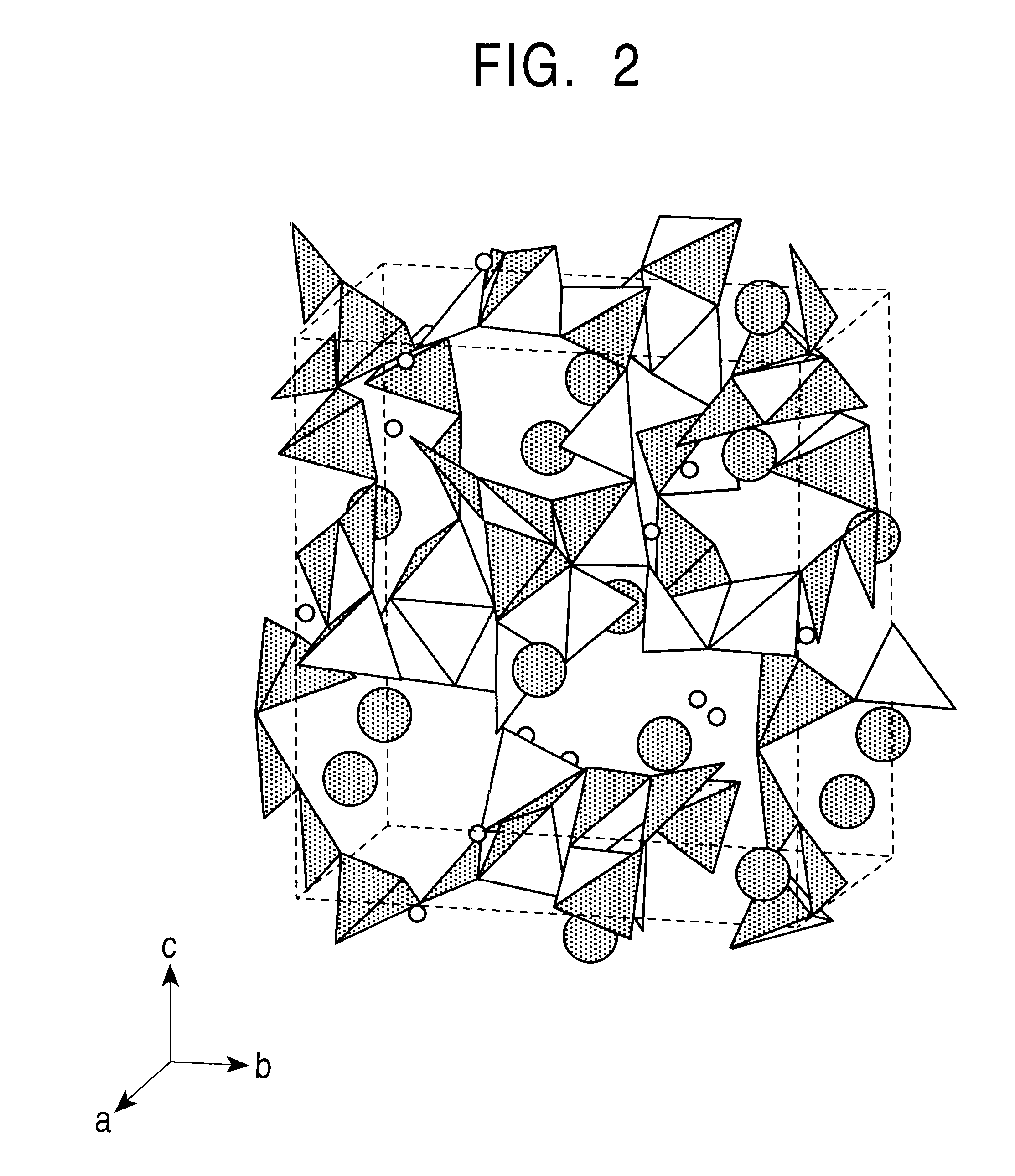Borate crystal, growth method of the same and laser equipment using the same
a growth method and laser technology, applied in the field of bore crystal, growth method of same and laser equipment using the same, can solve the problems of inability to increase the pulse repetition rate, inconvenient for shorter wavelengths, and low refractive index, and achieve the effect of high repetition rate and more effective laser processing
- Summary
- Abstract
- Description
- Claims
- Application Information
AI Technical Summary
Benefits of technology
Problems solved by technology
Method used
Image
Examples
example 2
960 g of rubidium carbonate (Rb.sub.2 CO.sub.3), 300 g of lithium carbonate (Li.sub.2 CO.sub.3), and 1,160 g of boron oxide (B.sub.2 O.sub.3) were mixed, sintered at 650.degree. C., and melted in a platinum crucible (diameter of 100 mm, height of 100 mm). The calculated composition of the melt was approximately Li:Pb:B=0.49:0.51:2.03 by molar ratio. A single crystal was grown by a Czochralski process using a seed crystal, which was prepared by cutting a crystal grown using a polycrystal as a seed crystal. The rotation rate of the seed crystal was 40 rpm and the pulling rate was 0.2 mm / h.
A transparent single crystal was thereby prepared as shown in the photograph in FIG. 3. A part of the transparent crystal was cut and subjected to structural analysis using a single-crystal structural analysis apparatus (Rigaku AFC-5R). The results of the structural analysis are shown in FIG. 2 and Table 2. Moreover, the results of chemical analysis of a part of the crystal are shown in Table 3.
A par...
example 3
80 g of rubidium carbonate (Rb.sub.2 CO.sub.3), 120 g of cesium carbonate (Cs.sub.2 CO.sub.3), 50 g of lithium carbonate (Li.sub.2 CO.sub.3), and 200 g of boron oxide (B.sub.2 O.sub.3) were mixed, sintered at 550.degree. C., and melted in a platinum crucible (diameter of 40 mm, height of 60 mm). The calculated composition of the melt was approximately Li:Rb:Cs:B=0.97:0.5:0.53:2.06 by molar ratio. A single crystal was grown using a part of the crystal of EXAMPLE 2 as a seed crystal. The rotation rate of the seed crystal was 15 rpm and the pulling rate was 0.1 mm / h. A photograph of the resulting single crystal is shown in FIG. 9. As shown in FIG. 9, the resulting crystal had a partial transparent portion, and this portion was cut off.
The composition of the resultant crystal is shown in Table 4. The transparent portion was pulverized, and the powder was irradiated with pulsed YAG laser light (wavelength of 1,064 nm, beam diameter of 1 mm, 2 mJ, 10 ns), and the generation of green light...
examples 4 to 6
In order to prepare a borate single crystal represented by the chemical formula Li.sub.1.5-a Cs.sub.0.5-b X.sub.a+b B.sub.4 O.sub.7, a carbonate salt selected from sodium carbonate, potassium carbonate, and rubidium carbonate; lithium carbonate; cesium carbonate; and boron oxide were weighed, mixed, and sintered at 600.degree. C. so as to yield a composition (by weight ratio) wherein X was Na (EXAMPLE 4), K (EXAMPLE 5), or Rb (EXAMPLE 6), the subscript a was 1.0 (EXAMPLE 4), 0.3 (EXAMPLE 5), or 0.5 (EXAMPLE 6), and the subscript b was 0 (EXAMPLE 4), 0.2 (EXAMPLE 5), or 0.1 (EXAMPLE 6).
PUM
 Login to View More
Login to View More Abstract
Description
Claims
Application Information
 Login to View More
Login to View More - R&D
- Intellectual Property
- Life Sciences
- Materials
- Tech Scout
- Unparalleled Data Quality
- Higher Quality Content
- 60% Fewer Hallucinations
Browse by: Latest US Patents, China's latest patents, Technical Efficacy Thesaurus, Application Domain, Technology Topic, Popular Technical Reports.
© 2025 PatSnap. All rights reserved.Legal|Privacy policy|Modern Slavery Act Transparency Statement|Sitemap|About US| Contact US: help@patsnap.com



